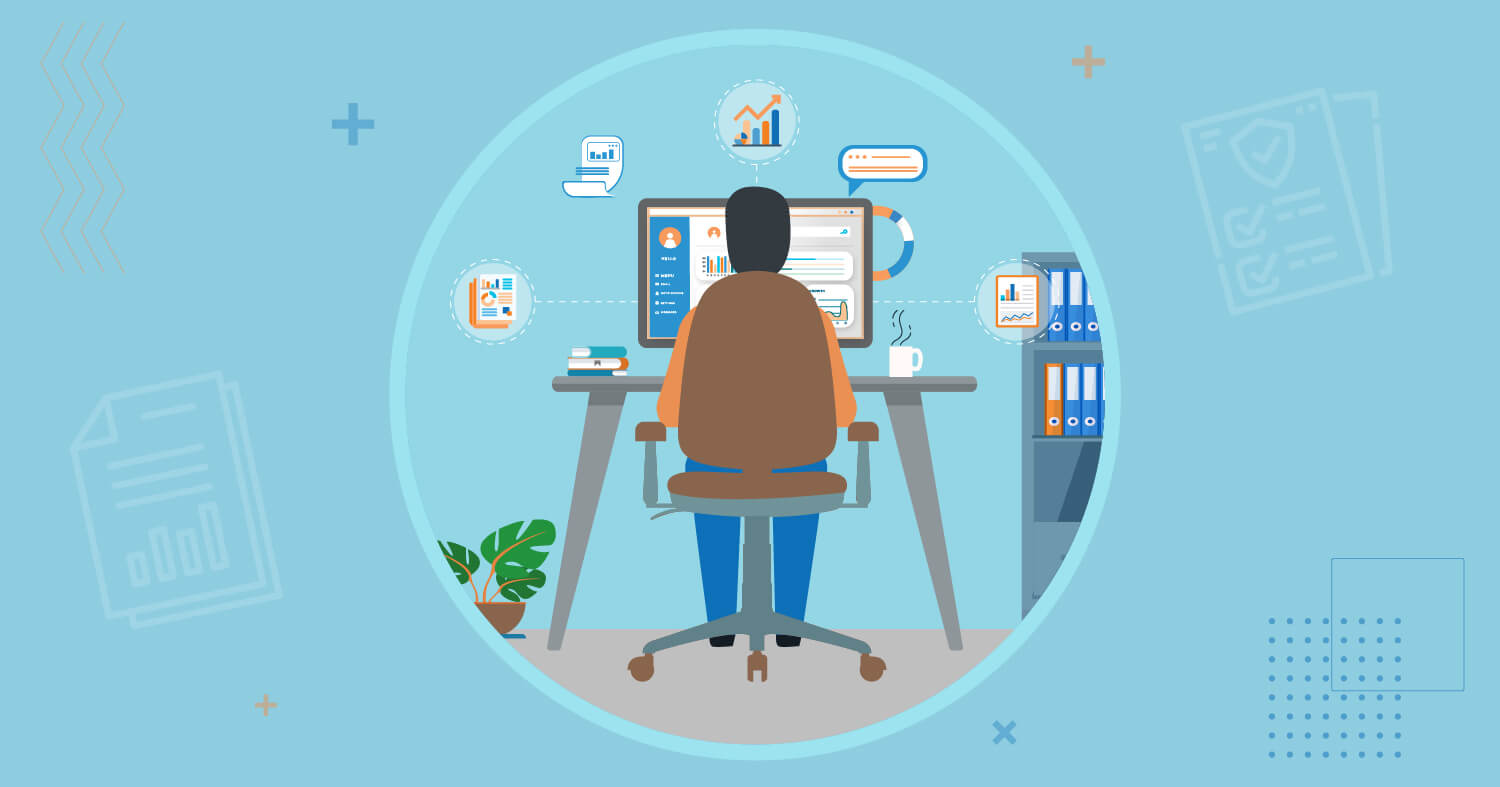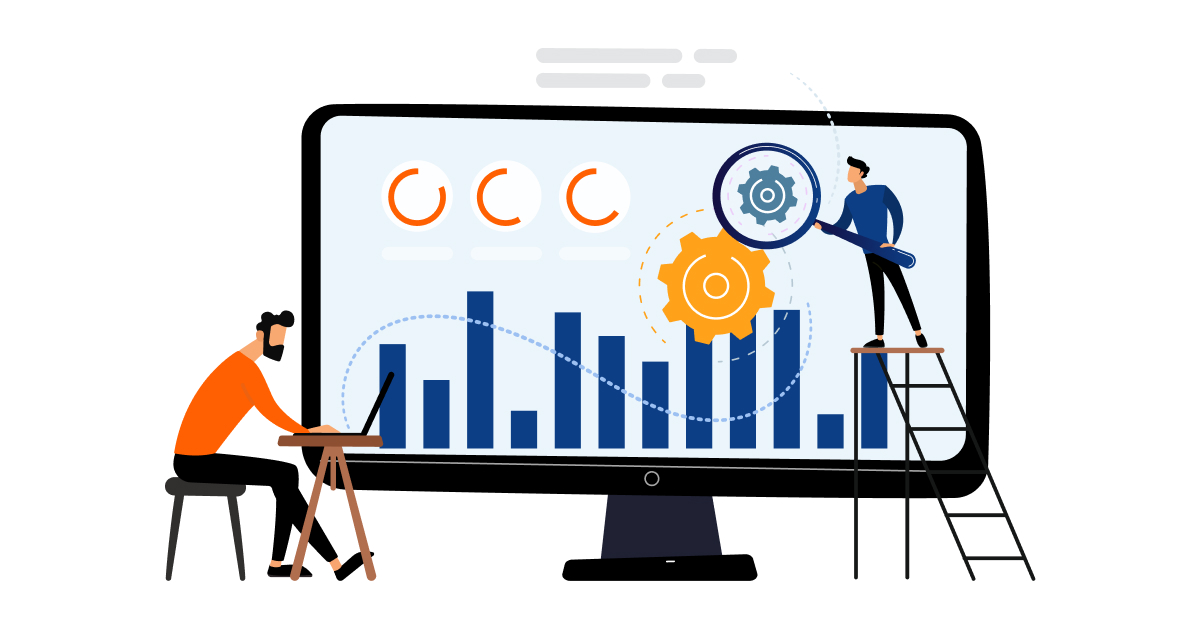
Measuring employee performance reporting involves assessing various factors such as accuracy, timeliness, relevance, and effectiveness. It is often said that a company is as good as its employees’ performance. Therefore, it is mandatory for an organization to continuously and accurately evaluate an employee’s performance.
The evaluation of the employee’s performance indicates his/her development and its role in the company’s success. However, assessing the employee’s performance is a tedious process, and both the employees and the employers are wary of the hassle of gauging the employee’s performance. Manual performance review is a time-consuming and costly process that creates anxiety due to uncertainty over the feedback.
As companies gradually discard the yearly performance review method, many are now opting for performance management solutions to streamline employee performance reporting. Adopting a new process to evaluate the improvement of the workforce has many merits, and employee performance reviews once or twice yearly are a thing of the past.
Today, nearly 43% of employees receive weekly feedback, and 45% of HR leaders don’t consider annual employee reviews accurate. This blog will explain how to measure and report employees’ performance using performance management solutions.
Table of contents
Problems Faced by Employees that Hamper Their Performance
The employee improvement productivity review can help a company to excel in its performance and meet its organizational objectives and goals, besides enhancing the skills and development of the employee.
It is an effective tool to let employees grow and reach their full potential through constructive feedback. However, there are certain problems associated with employee performance reviews. Some of these are:
It is a Time-Consuming Process
An employee performance review is a time-consuming process both for managers and employees.
Reports suggest that, on average, a manager spends over 200 hours preparing annual performance reviews. Hence, frequent reviews must be carried out instead of annual reviews.
Creates Anxiety
Employee performance reporting systems can create anxiety among employees. It directly impacts the prospects of an employee with a company.
Complex Process
The performance evaluation process in any organization is very complex. Many companies use different time-tracking tools to streamline evaluating an employee’s performance based on set parameters.
Can Be Ineffective
It is sometimes possible that performance reviews aren’t effective because of distrust between the employees and the supervisors.
There are credibility issues. Any analysis or performance metrics supervisors produce will not be taken at face value by employees. The lack of credibility can result from poor communication, inexperienced management, or incompetence.
One-Way Communication
Performance evaluation becomes a one-way communication flow from supervisors to employees. In these communications, the employees are not included but receive the diktat from the higher authorities, causing low employee morale.
Besides, it is important to note that an employee’s performance in a company may suffer for multiple reasons; some reasons for poor employee performance are as follows.
Lack of Consistency
Poor employee performance reporting can also result from inconsistent supervisor feedback. Mixed messages may result in resentment and confusion among employees.
Small organizations are more prone to damages resulting from mixed messages. This is because employees communicate more frequently with each other about those mixed messages.
Lack of Established Goals
Another reason for employees’ poor performance is the lack of established organizational goals. If the goals are not well established, the employees will have difficulty determining whether they have accomplished their tasks.
For employee performance reporting to be effective, companies must specify or communicate their goals to the employees.
Absence of Clear Strategy
Not just the absence of goals but also the absence of a clear strategy for achieving those goals can adversely affect the employee’s performance metrics.
The team leader must provide proper guidance and a plan for the employee. A clear strategy is also beneficial for a company in measuring its performance and making course corrections midway if the present strategy is ineffective.
What are the Benefits of Employee Performance Reporting?
Regular performance reviews are a healthy sign of constant organizational communication and contribute to a high retention rate.
Companies today use employee performance management software to review the performance of the employees frequently. There are several benefits of regular employee performance reporting; these are:
Identify, Track, and Maintain the Goals
With regular interactions, it becomes easy to understand the employee’s goal. With an employee performance review, a supervisor can identify the weaknesses and limitations of an employee and the pace of development of an employee over a fixed period. It keeps employees in sync with the company’s goals and objectives.
Prevent Miscommunication
No organization is immune to misconceptions or misunderstandings about work expectations. Regular interactions, such as discussions and inquiries, help overcome these misunderstandings.
Any concern regarding the work can be addressed during these scheduled meetings without affecting the workflow process management.
Regular Feedback Helps in Course Correction
Yearly reviews can be very intimidating. Regular feedback helps employees correct any mistakes as and when they are noticed. It also keeps the employees engaged and rewards them for their good work.
According to reports (Source), 32% of employees do not get regular feedback, which affects their work, while 63% feel they are not praised for their good performance.
To help companies meet their objectives, companies use employee performance management software with distinct advantages. This cloud-based software is beneficial as:
It Keeps Everyone Connected
These systems keep managers and employees updated on progress, development plans, and objectives. Plan changes can be made instantly and accessed from anywhere.
It Facilitates Regular Performance Review
It helps keep the staff motivated and looking to achieve the target by increasing workplace productivity. The objectives are made flexible and reviewed at regular intervals.
Provides Real-Time Feedback to Employees
Feedback is provided in real-time right after an event. The quicker the feedback, the more impact it has, as constructive criticism only helps improve performance.
Keeps Track of Personal Development Plans
Personal development is a key driving force for employee engagement and performance. Employees get the assurance that the company is investing in the future, and they can grow and become more skilled as a result.
It Helps in Objective Setting
Employees must be aware of their work objectives. The software helps set clear, smart objectives aligned with the company’s goal.
What are the Challenges in Assessing an Employee’s Performance?
There are many challenges in evaluating the performance of an employee. Some of these challenges are underlined below:
Career Development Becomes Secondary
If an employee’s performance evaluation process is not well structured, it fails to focus on developing the employee’s skills and abilities. Most employees feel that the company does not focus on their career development.
A Review is Limited to a Pay Hike
When a review is limited to the pay hike process, an employee only tries to bring the positives before the managers. This, in turn, restricts the employee’s ability to learn and grow.
Lack of Real-Time Data Makes the Entire Process Meaningless
The reports suggest most of the employees often rely on their memory in assessing the performance of the employee. This makes the entire process meaningless and ineffective.
The managers’ inability to document employee performance at every step and ignorance of data-based (performance) decision-making make the performance evaluation process a failure.
What is the Solution to the Employee’s Performance Review process?
Employee performance management software can easily resolve all office problems. The software’s main objective is to ensure that all employees work to their full potential to achieve organizational goals. The software helps bring the managers and employees on the same page and aligns them to their responsibilities. It brings transparency to the organization.
Two main objectives of the software are:
The annual performance review becomes easy as the managers and employees know expectations.
It keeps the employees engaged and motivated and indicates that the company values its assets.
As more and more companies are opting for performance management software, the benefits of using the software are tremendous; some of the benefits are:
Easy To Use
One of the software’s biggest advantages is its ease of use. All the necessary things for performance review are available in a single place, and the entire process is automated with no manual intervention.
Once the manager fills in all the required information, such as dates, review templates, etc., there is nothing else to do but oversee the process. The manager doesn’t have to remind the employees to complete the review constantly; rather, the software sends constant reminders to the employees.
This software has an in-built system to send reminders to the employees and complete the process. The managers are relieved of the responsibility to send reminders and focus entirely on the performance review outcome.
Integrated Process
The software includes many features that present a holistic view to the manager regarding the employee’s work profile.
It includes sharing feedback, objectives, and goals, and all these factors are included when the review is undertaken. The software presents a complete picture of employee performance and helps them make informed decisions.
Insights on Employee Performance
The software creates a complete employee profile based on the ratings or feedback received over time and includes performance analytics. These analyses are in the form of charts and graphs and calculate the employee’s leadership potential, among other things.
This analysis is used during the review to decide whether to increase the pay scale or promote the respective employee. Thus, it is a convenient tool that enables the company to make transparent decisions based on the work done and goals achieved by an employee.
Better Control
The software gives a manager complete control over the entire performance review process. They can decide when the cycle will start and subsequently end.
They can also decide on the number of employees participating in the process. To increase transparency, the managers can restrict call-back reviews, review visibility, etc.
Conclusion
Performance management establishes a communication chain between employees and management. Its objective is to encourage the employees to work efficiently to their full potential in realizing the organizational goals.
Thus, an organization’s employees’ performance is required to be assessed. Earlier, managers did this manually, and the employee review was carried out every year, but slowly, the process has changed.
The employee review is done monthly or weekly, which is more productive for the employees and the company. The earlier method employed to track employee performance reporting had many flaws, creating uncertainty and confusion among the workforce.
It also creates friction among the employees, resulting in low morale and working below potential. The feedback wasn’t regular to employees, further aggravating the problem. Most businesses gradually became aware of the business management software that comes in handy for employee performance reporting.
The software has many benefits for an organization and the employees, from keeping the employees engaged by providing regular constructive feedback to creating a culture of effective and open communication.
Tailor-made software can improve employee morale and overall business performance. Companies deploy software that consists of many tools to assess employee performance. These tools are designed to keep managers, supervisors, and employees on the same page. They are instrumental in creating an accurate job profile and setting realistic expectations.
It further drafts the organization’s goals and then aligns them with its responsibilities. The main objective of the software is to keep the company ready to meet all its desired goals in time. This is done by actively engaging the employees and evaluating their performance, sending feedback in real-time, and praising their efforts.






